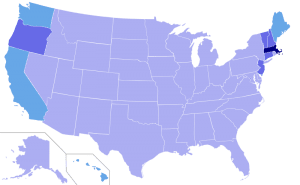
Harvard, Stanford, and MIT consistently rank as America’s top undergraduate economics programs according to U.S. News & World Report and QS Rankings 2021.
These schools provide much more than name recognition. Their graduates land positions at powerhouse organizations like Goldman Sachs and the World Bank. This makes economics one of the most popular degree choices. The investment varies substantially – UC Berkeley’s tuition starts at $14,000 while the University of Chicago’s reaches $58,000. However, the career opportunities make it worthwhile.
These top-ranked programs have specialized tracks for economic theory, international trade, and macroeconomics enthusiasts. You’ll gain analytical skills that employers just need through seminars, workshops, and independent projects. Let’s find an economics program that aligns with your future goals.
Top Economics Programs at Ivy League Universities
Three universities in the prestigious Ivy League stand out because of their exceptional economics programs. Each university has unique advantages through its specialized research centers and distinguished faculty members.
Harvard Economics Department Overview
Harvard‘s economics department takes pride in its extraordinary faculty-to-student ratio of 7:1. The department has Nobel Prize winners and Clark medal recipients who lead research in many economic fields. Faculty members are experts in microeconomics, macroeconomics, and specialized areas like behavioral economics. The department has built strong connections with government agencies and global policy organizations.
Yale’s Unique Program Features
Yale‘s economics department has 66 teaching faculty members and about 130 Ph.D. students in residence. Three major research centers drive the department’s work: the Cowles Foundation, Economic Growth Center, and Tobin Center for Economic Policy. On top of that, it works closely with professional schools, including the Jackson School for Global Affairs and School of Management.
Princeton’s Economic Theory Focus
Princeton‘s economics department is home to more than a dozen leading research centers and labs. Students can choose specialized tracks in mathematical finance, corporate finance, and behavioral finance. The economics program attracts over 250 juniors and seniors each year, and more than 90% of seniors receive job offers right after graduation.
Research Centers and Opportunities
These institutions’ resilient infrastructure provides extensive opportunities to specialize:
Harvard’s research initiatives include:
- Foundations of Human Behavior Initiative
- German Administrative Data Project
- Lab for Economic Applications and Policy
Yale’s research centers focus on:
- Economic Growth Center, 62 years old
- Inclusion Economics for policy-engaged research
- Center for Algorithms, Data, and Market Design
Princeton maintains specialized facilities through:
- Bendheim Center for Finance
- Gregory C. Chow Econometric Research Program
- William S. Dietrich II Economic Theory Center
These institutions are a great way to get experience for international students. Yale’s International Development Economics program offers specialized training, while Princeton’s Research Program in Development Economics studies global poverty. Harvard’s diverse faculty researches climate change, racial inequities, and global poverty.
Students at these institutions benefit from strong connections with professional organizations, government agencies, and global policy institutions. These networks help students find internships, research opportunities, and careers in academia, government, and the private sector.
Leading Public Universities for Economics
Public universities now rival private institutions with their outstanding economics programs, academic excellence, and research opportunities. Two schools shine above the rest because of their distinguished faculty and complete curricula.
UC Berkeley’s Program Strengths
UC Berkeley‘s Economics Department has ranked among the world’s top five economics departments since its founding in 1903. The department’s legacy includes six Nobel Prize winners in Economics, which makes it one of the best economics schools for undergraduates. Berkeley’s economics program serves over 1,500 undergraduate students with courses ranging from economic history to advanced macroeconomics.
Students must meet high academic standards to join the program. The department requires a minimum 3.5 GPA in upper-division economics courses and a 3.3 GPA overall. Research opportunities and study abroad programs give students real-life experience that prepares them for their careers.
University of Michigan’s Specialized Tracks
Michigan‘s economics department brings over a century of excellence to its students. The program covers economics subfields of all types. Students need a grade of C– or better in core economic theory courses. They must also show their proficiency in statistics and econometrics before moving to specialized tracks.
The department excels at student support with regular advising sessions every Monday and Thursday. Students who want to pursue advanced economics should continue their mathematics studies beyond simple calculus, which helps with courses like ECON 451 and ECON 453.
Cost-Benefit Analysis
Cost-benefit analysis (CBA) is a cornerstone of both programs’ curricula. Students learn to assess costs and benefits of projects or investments. The training focuses on:
- CBA’s role in U.S. regulatory decisions
- Skills needed for thorough analyzes
- Critical evaluation of policy research
- Ground application of microeconomic principles
Research Funding and Grants
Both schools offer research funding through multiple channels. The Economics program supports research in:
- Econometrics and economic history
- Environmental and international economics
- Labor economics and public finance
- Mathematical economics and finance
The National Science Foundation supports interdisciplinary research through individual and multi-investigator projects. Students can get funding from doctoral dissertation improvement awards, experimental research grants, and undergraduate research experience programs.
These programs have strong ties with federal statistical agencies and support innovative survey data analysis. Research goes beyond traditional economics and includes computer science interfaces and social science applications.
UC Berkeley charges $12,000 for in-state tuition, while out-of-state students pay $42,000. The University of Michigan’s in-state tuition is $16,000, with out-of-state rates at $55,000. These costs might seem high, but they’re an investment in programs that create successful graduates in business, government, and academia.
Conclusion
Your career goals and academic interests should guide you when picking the right economics program. Harvard, MIT, and Stanford stand out with their outstanding faculty, research options, and career outcomes. Ivy League universities give you great faculty-to-student ratios and research centers. Public universities like UC Berkeley offer similar quality education at lower costs for in-state students.
Economics graduates have bright career prospects in sectors of all types. Their starting salaries range from $69,009 to $120,000. Top-tier program graduates show strong placement rates on Wall Street. Government positions provide stable career paths with median salaries of over $115,000. Academic roles let you dive into research and influence policy.
Specialized programs with global economics viewpoints and scholarship opportunities help students gain international exposure. Strong industry connections and research facilities prepare you for success. You can work in multinational corporations, government agencies, or academic institutions.
Your program choice should match your interests in quantitative analysis, policy research, or international economics. Rankings matter but you should also think over specialized tracks, research opportunities, and location benefits that match your career goals.
SEE ALSO: Which Colleges are Best for Art?















